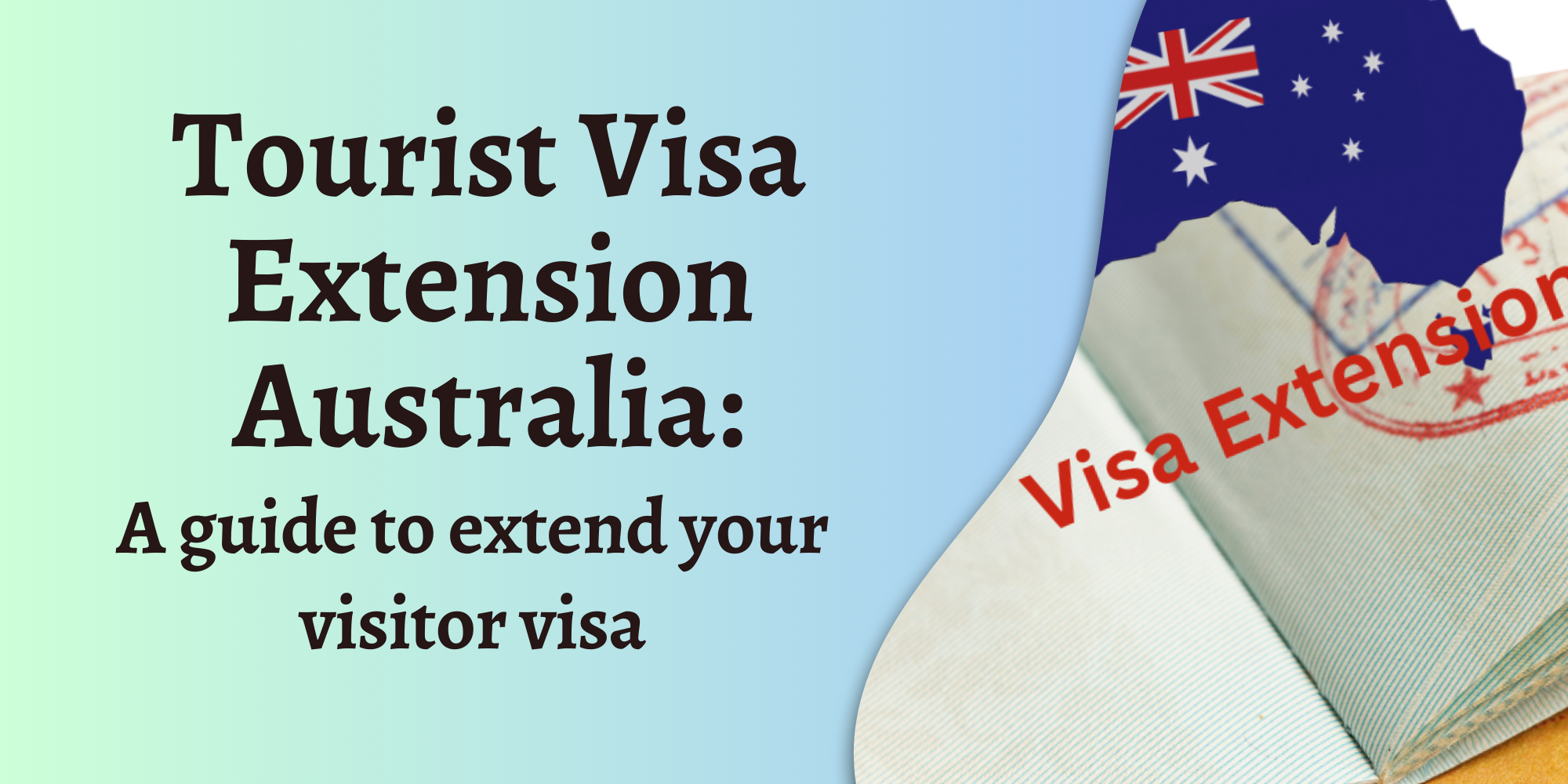Is your 3-month tourist visa period about to end? There’s still a way you can legally extend your visit as a genuine tourist—by simply reapplying for a new Tourist visa onshore (a.k.a Tourist visa extension)!
Technically speaking, getting a Tourist visa ‘extension’ is synonymous with applying for an onshore Tourist visa. Once you’re granted this new Tourist visa or visitor visa subclass 600, you won’t have to leave Australia before the usual 3-month visit period ends.
Keep reading to learn about the visa’s eligibility requirements, supporting documents, conditions and FAQs
When is a Tourist visa Australia extension possible?
Typically, tourist visas are granted for 3-month stays at a time. You’ll have to exit Australia before each period ends and then re-enter if you intend to return.
If you wish or need to stay in Australia longer without leaving the country, you can apply for an onshore tourist visa. This extends your stay for up to 12 months, with the department deciding the exact length of the extension.
To be eligible for this tourist visa extension, make sure:
- Your current tourist visa hasn’t expired
- There’s no Condition 8503 – no further stay condition attached to your current visa
- Your total stay in Australia won’t exceed 12 consecutive months
- You have enough money to fund your extended stay
- You have compelling reasons for staying longer, which may include:
- Exploring the different states of Australia for tourism purposes
- Participating in local festivals or cultural events
- Supporting sick or dying friend or family member
You can’t extend this visa further beyond the maximum 12 months allowed.
If you find yourself in special circumstances or are simply uncertain, seek professional advice from a trusted Australian migration agency. They’ll give you insights and clarify expectations regarding your situation.
How to Apply for Extension of Tourist Visa in Australia
Applying for an extended tourist visa is the same as applying for a tourist stream visitor visa the first time:
- Login to your ImmiAccount.

You can read our ImmiAccount Guide to help you create and log in to your account.
- Click on ‘New Application’ and click on Visitor Visa 600.
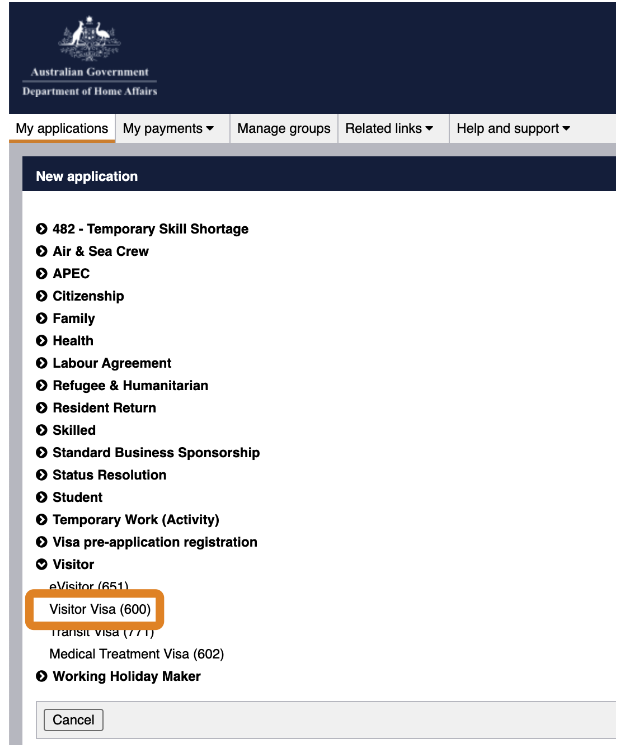
- Fill in the correct responses under ‘Application Context’.
- Tick ‘No’ for the question, Is the applicant currently outside Australia? A prompt will appear, confirming that you’re applying for an onshore tourist visa.
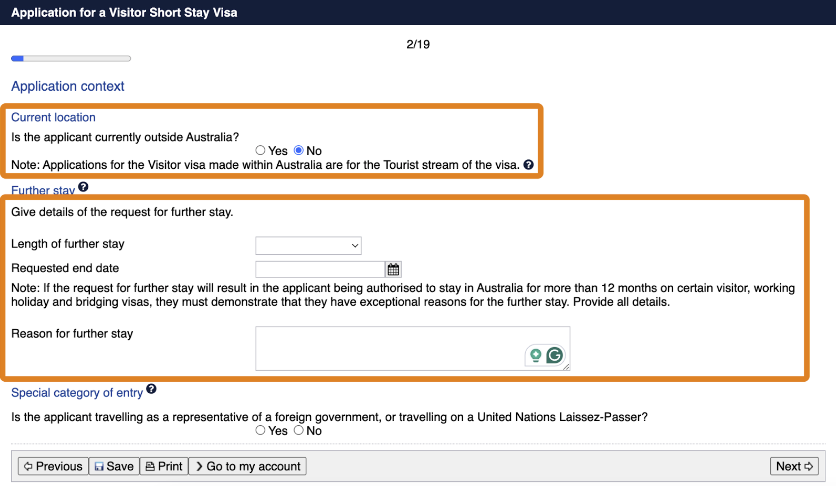
- Provide details of the request for an extension or further stay.
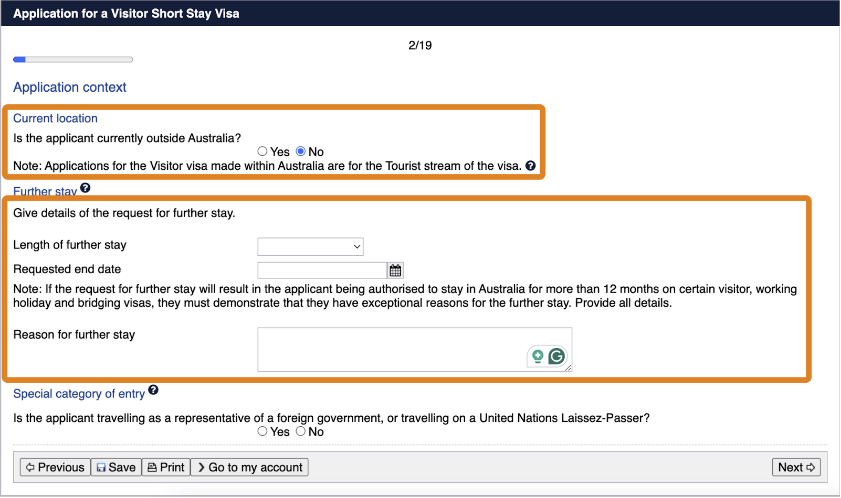
- Accurately provide information for all required fields. This will be about 19 pages, including:
- Applicant bio
- Passport details
- Contact information
- Details of your travel in Australia
- Employment details
- Financial status
- Health and character declaration
- Visa history
- Review the summary of information. Make sure to correct any mistakes and update the information.
- Attach all requirements and supporting documentation.
- Pay the visa application fee.
Tourist Visa Extension Requirements
Below is a checklist of documents you must submit together with your online application form:
- Passport with your photo, bio and issue and expiry dates
- Marriage or divorce certificates (if applicable)
- Evidence of previous travel, such as entry/exit stamped pages of your passport, photos, etc.
- Proof of sufficient funds, such as bank statements, payslips, etc.
- Proof of return to home country, such as assets, properties, investments, ongoing employment or studies
- Travel itinerary or tourism plans
- Invitation letter for tourist visa from family or friends (if applicable)
If the inviter is sponsoring your stay, attach documents such as:
- their visa status/citizenship
- financial status, such as employment details, bank statements, pay slips, etc.
- lease agreement, house bills, etc.
- Health certificate (if required)
- Police certificate (if required)
- Adequate health insurance
Tourist Visa Extension Australia Fee
As of writing, the cost of applying for an onshore Tourist visa is AUD 475.
Note that this can change depending on the Department of Home Affairs.
Also, this covers only the basic application charge. You must pay for other fees like health checks and police certificates separately.
Tourist Visa Extension Processing Time
Typically, you can receive your new tourist visa within a few days.
Based on data from the Department, 50% of applications are processed in 8 days, and 90% within 27 days.
To prevent unnecessary delays, make sure to complete your online application thoroughly and correctly, attach all supporting documents, and respond promptly if more information is requested.
When to Apply for Tourist Visa Extension
We recommend that you apply for the extension 3 to 4 weeks before your current Tourist visa expires.
What are the conditions attached to my Tourist visa?
A tourist visa typically comes with these conditions:
- Visa condition 8101 – you must not work in Australia
- Visa condition 8201 – you must not study in Australia for more than three months
In some cases, other discretionary visa conditions may also be attached, such as:
- Visa condition 8501 – you must maintain adequate health insurance
- Visa condition 8531 – you must leave Australia before your visa expires
- Visa condition 8558 – you must not remain in Australia for more than 12 months in any 18 month period
- Visa condition 8503 (no further stay) – you cannot apply for another substantive visa during your stay in Australia
We recommend you regularly do a quick VEVO check to review the conditions of your visa and stay lawfully in Australia.
Can I request a waiver of the no further stay condition?
Yes, you can request a waiver of visa condition 8503 No further stay. However, approval is at the discretion of the Department. Usually, they grant it in dire, unforeseen circumstances, such as:
- Serious medical issues that prevent travel
- Family emergencies like severe illness or loss
- Unsafe conditions in your home country, such as natural disasters or civil unrest
To make a request, fill in the online No Further Stay waiver request form.
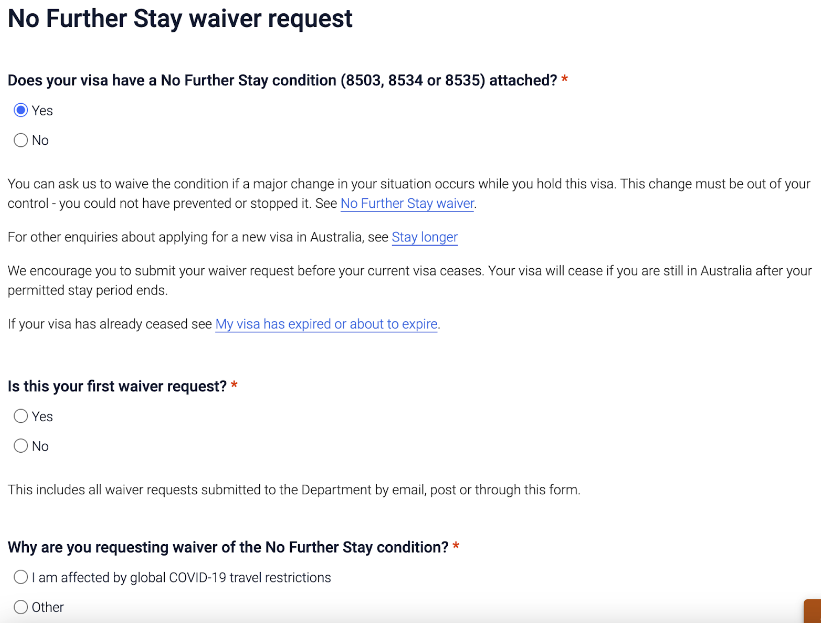
You may also submit by post using this paper application form.
Attach the following to your application:
- Copy of your passport showing your bio and issue dates
- Proof supporting your reasons for further stay (e.g. medical reports)
You must submit this before your current visa expires.
Can I bring my parents to Australia on a Tourist visa?
Yes, you can do so by helping them apply for a separate Tourist visa.
If you’re looking to bring your parents to Australia on a long-term basis, you can explore Family visas like the 870 Sponsored Parent (Temporary) visa or 838 Age Dependent Relative visa.
If I can’t extend my Tourist visa, can I apply for other visas instead?
Yes, you can as long as your tourist visa does not have a condition that prevents further stay (visa condition 8503). Otherwise, you must first request for the further stay condition to be waived before applying for any substantive visa.
If you’re planning to pursue Australian studies, you can apply for Student visa. Or, if you’re interested in seeking employment, pursue Australian working visas instead.
Looking for help with your tourist visa extension?
If you’re unsure about your eligibility for a tourist visa extension, KBA Global’s friendly migration agents are here to help.
We’re happy to shed light on your situation and assist you with the application process. We can also help you explore other visa options, should your plans change for your extended stay.
Schedule a free consultation so you can discuss your case with us further.
Disclaimer: The above information is a general guide and not professional immigration advice. Be aware that immigration laws and regulations can change swiftly, potentially rendering some or all of the information outdated. Thus, before using the information above, we recommend checking the current laws with assistance from a migration agent or the Department of Home Affairs website.

